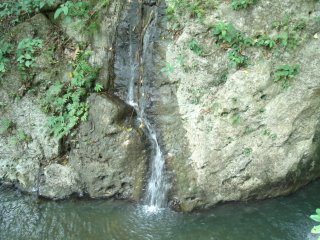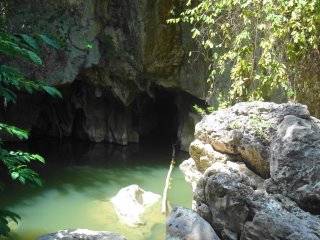Tropical storms could be vicious and unpredictable, and could last for days. I remember that as a child I experienced storms at night when howling winds kept me awake, half-expecting that our roof would be blown out into the dark skies. Only tiredness would lull me to sleep or perhaps the warmth and comfort of being with my family. Waking up to the same undulating sounds, my brothers, sisters and I - unable to play outside - could only look through the windows and watch the wrath of the storm turn the streets into muddy rivers, carrying along debris from nipa huts washed away by torrents, broken branches or uprooted trees.
I had an unusual experience of a typhoon in broad daylight once. The wind was blowing violently eastward bending trees to that direction. The sky was dark. Rains pelted the roofs and trees in total abandon transforming the pitter-patter sounds into that of galloping horses. The streets were deserted. Muddy waters rushed through the river rising steadily... Then, all of the sudden, the winds and rains stopped. An eerie silence prevailed. It was still cloudy but a strange light permeated the scenery. The trees were greener and looked so alive (even after so many hours of battering). Finding it strange, I went out and saw the stillness prevailed all around. In a few minutes, I heard the sounds of galloping horses again and ran home for cover.
Later on, I would learn from our science class that it was the eye of the storm... Our life is a lot like living in a storm. We have the choice to live it at the periphery of our being and be tossed about by the violence of life's rains and gusty winds or live it to the fullest from the center of our being where rains and winds' purpose can be discerned.
I had an unusual experience of a typhoon in broad daylight once. The wind was blowing violently eastward bending trees to that direction. The sky was dark. Rains pelted the roofs and trees in total abandon transforming the pitter-patter sounds into that of galloping horses. The streets were deserted. Muddy waters rushed through the river rising steadily... Then, all of the sudden, the winds and rains stopped. An eerie silence prevailed. It was still cloudy but a strange light permeated the scenery. The trees were greener and looked so alive (even after so many hours of battering). Finding it strange, I went out and saw the stillness prevailed all around. In a few minutes, I heard the sounds of galloping horses again and ran home for cover.
Later on, I would learn from our science class that it was the eye of the storm... Our life is a lot like living in a storm. We have the choice to live it at the periphery of our being and be tossed about by the violence of life's rains and gusty winds or live it to the fullest from the center of our being where rains and winds' purpose can be discerned.

